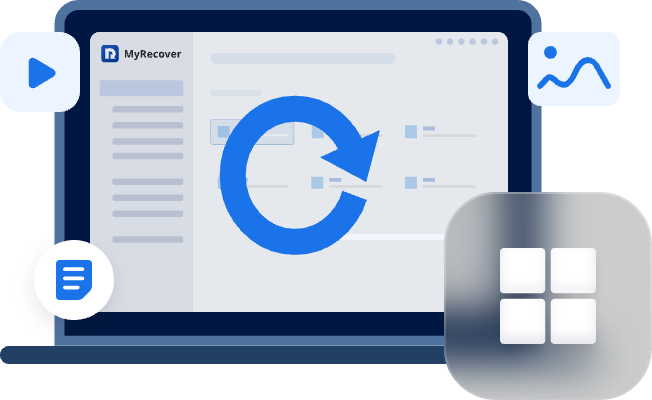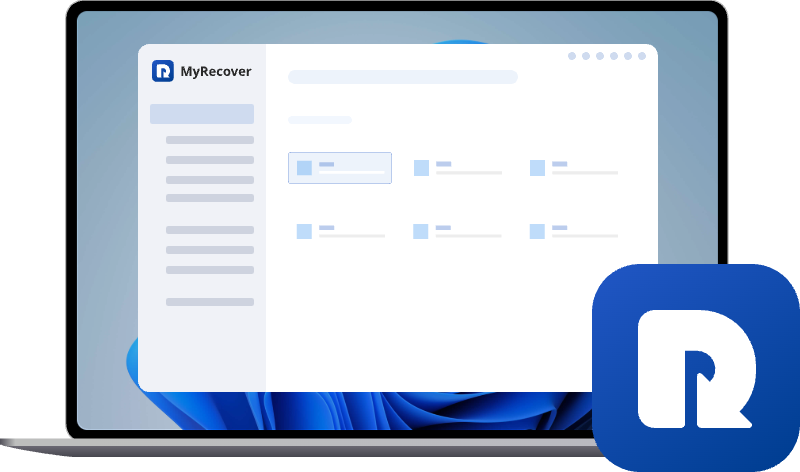How to Recover RAW Partition to NTFS Without Losing Data [Detailed Guide]
Are you wondering how to recover a RAW partition to NTFS without losing data? Should you format the RAW partition immediately as prompted by Windows? This article provides several solutions to recover an NTFS partition from a RAW drive with no data loss.
What is a RAW Partition?
A RAW partition is a storage drive (HDD, SSD, USB, etc.) that has lost its recognizable file system (NTFS, FAT32, exFAT), making its data inaccessible. Instead of showing files, Windows labels it as "RAW" and may prompt you to format it. It can only be accessed normally after being restored to a recognizable file system such as NTFS.
Unrecognizable partition can happen for various reasons, and understanding these causes can help you take the right steps to recover or repair the partition.
- File System Corruption: The file system on the partition can become corrupted due to various reasons, such as improper disconnection from computer or unsafe ejection.
- Partition Table Damage: The partition table holds the structure of the drive and helps the system know where the file system is located. If the partition table becomes corrupted, the partition may appear as RAW.
- Bad Sectors: If a hard drive or USB drive develops bad sectors (physical damage or wear on the disk surface), this can prevent the system from reading the file system correctly.
- Virus or Malware Infection: Malware can corrupt the file system or data on the partition or hard drive. Some viruses intentionally damage or overwrite partition tables, making the system unable to access the drive.
- Failed Disk Operation: Interrupted formatting, cloning or resizing could lead the partition become corrupted and unreadable.
How to Recover RAW Partition to NTFS Without Losing Data
When Windows prompts you to format or initialize the RAW partition, hold your horses! Once you choose to format it, all the files on the RAW partition will disappear. Even if you can access the partition after formatting, you'll see nothing but a blank partition. Formatting that causes the loss of all files on the partition is meaningless.
Therefore, before recovering RAW partition to NTFS drive, the most important thing is to ensure the safety of the files on the partition. Adhering to the key principle "recover data first, fix partition later" can protect your data to the greatest extent.
Section 1. Recover Data from RAW Partition
It is necessary to get back files and move them to another safe location. As for recovering data from inaccessible partitions, the following methods are effective to keep data safe whether you have made a backup or not.
Restore your files with File History
File History is a feature in Windows that automatically backs up your personal files and folders from libraries, desktop, contacts and favorites etc., allowing you to restore them if they are accidentally deleted or damaged. You can also add specific folders in File History for backup. It periodically copies files to an external drive or network share, keeping previous versions available for retrieval.
Step 1. Type "Restore your files with File History" in the start menu and open it.
Step 2. Browse through the folders and choose the folder where your files are stored.
Step 3. Click the green "restore" button to recover files.
Backup and Restore (Windows 7)
Backup and restore is a built-in tool to back up your files and create system images to protect against data loss or system failure. It allows you to create copies of your files and settings, and you can restore them if necessary.
Step 1. Type "backup settings" in the start menu and click "Go to Backup and Restore (Windows 7)".
Step 2. Click "Select another backup to restore files from" and choose a created backup you want to restore files from.
Step 3. Select files you want to restore and click "Next".
Step 4. Choose a safe location to restore your files and click "Restore".
When the process is completed, the message "Your files have been restored" shows on the screen. Then you can check the restored files in the designed location.
Both of the methods mentioned above require enabling "File History" and "Backup and Restore" features before data loss occurs and relevant data backups are available. Otherwise, they will not work, and you can try professional data recovery tools.
Professional data recovery software-MyRecover
MyRecover supports to recover files without backup from various complex data loss scenarios, such as emptying the recycle bin, formatting hard drive, accidentally deleting files and more. It features a simple graphical user interface, making the data recovery process easy for both advanced users and beginners.

- Recover data from a windows in just 3 simple steps for free.
- Recover deleted or lost files from HDDs, SSDs, USB flash drives, SD cards, cameras as needed.
- Support 1000+ formats of photos, videos, audio files, docs, archives, emails, and more.
- Reliable rescue for deletion, formatted disk, emptied Recycle Bin, system crashes and more.
Step 1. Download and install MyRecover on your computer.
Step 2. Launch it and select the raw partition to search for lost data.
Step 3. Choose the files you want to recover and click "Recover".
Step 4. Select a safe location to store the recovered files (another healthy drive).
Once the scanning process finishes, you can check the recovered files in the destination folder.
Section 2. Recover RAW Partition to NTFS Without Losing Data
After ensuring the safety of the data, you can try various methods to repair the partition with peace of mind, without having to worry that improper operations will erase all the data on the partition. This process is necessary, and it can make the partition functional again as a storage device. Here are several methods to recover NTFS partition from RAW state.
Checking Error Using File Explorer
The disk error checking in File Explorer is an error checking tool that is more suitable for ordinary users. The operation of its graphical interface is more user-friendly, and it can quickly scan and repair file system errors and bad sectors.
Step 1. Double click "This PC" icon to open File Explorer and select the RAW partition.
Step 2. Right click to choose "Properties". In the Properties window, navigate to the "Tools" tab.
Step 3. Then click "Check (or Check now)" under the "Error Checking" to check and scan the partition error automatically.
Run CHKDSK using Command Prompt
CHKDSK is a command-line interface utility in Windows that checks the integrity of a drive's file system and attempts to fix errors. It's like a disk checker that can diagnose and repair both logical file system problems and bad sectors. Running CHKDSK is also an effective way to recover RAW partition to NTFS without losing data.
Step 1. Type "command prompt" in the start menu to open it and run it as administrator.
Step 2. Enter the command chkdsk G: /f /r to scan and fix file system errors, bad sectors and logical corruption on the partition (replace the drive letter "G" with your actual RAW drive letter).
When the process is finished, you can restart your computer to check if the RAW partition backs to NTFS format.
Format the RAW partition
If these two methods don't work or the command line is too difficult for you, you can format the RAW partition in File Explorer to fix RAW hard drive to NTFS. This approach is simple and straightforward. However, it will erase all the files on the partition. That's why it was mentioned to restore the data first.
Step 1. Open File Explorer and select the RAW drive.
Step 2. Right click to choose "Format", then change the file system as NTFS and mark the "Quick Format" option.
Step 3. Click "Start" to format the raw partition.
If, under special circumstances, you have to format the hard drive first, you can also recover data from the formatted hard drive afterward using MyRecover.
Tips to Prevent Partition from Becoming RAW
When a partition turns into RAW, it not only makes the partition inaccessible but also poses a risk of data loss. Therefore, it is necessary to take some measures to prevent the partition from turning into RAW.
- Safe Ejection: Always eject USB and external hard drives properly before unplugging to prevent file system corruption.
- Antivirus Update: Use up-to-date antivirus software to shield your system from viruses and malware that can damage file systems.
- Drive Health Checks: Regularly run diagnostic tools to detect bad sectors and other hardware problems that could lead to drive failure.
- Regular Backups: Backup important files frequently to safeguard against data loss due to corruption.
Conclusion
This step-by-step guide shows how to recover RAW partition to NTFS without losing file. You've learned several ways to recover data and fix the partition. For challenging cases, the Professional and Technician version of MyRecover provide powerful recovery capabilities, making them ideal for professionals and advanced users dealing with complex data loss scenarios like system crashed.


